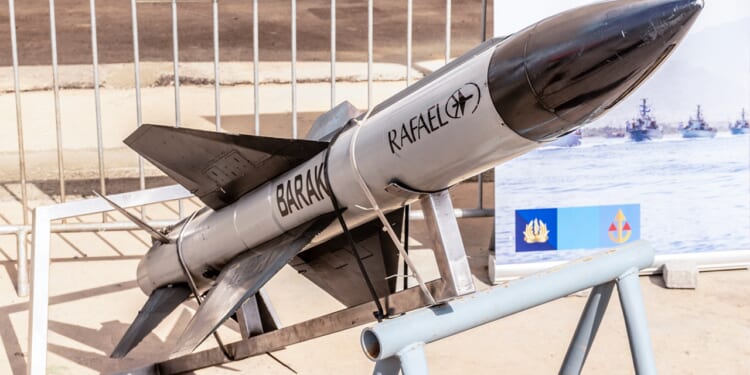A concern for Denmark was the difficulty in integrating the Barak MX missile system with other NATO nations—as such interoperability would be vital in any future European conflict.
The Barak MX is an integrated ground-based air-and-missile defense system developed by the Israeli firm, IAI. This system is used to defend against a broad set of threats: drones, cruise missiles, aircraft, and even some ballistic missiles. Denmark had been eying the Barak MX as part of its effort to build up its ground-based air-defense (GBAD) capabilities as a response to increasing threats from Russia.
One of the reasons Denmark was so interested in using IAI’s product over others was because of the faster delivery times the Israeli firm offered as early as 2026, IAI swore they could get the Barak MX to Denmark.
Despite this, Denmark announced it would not be purchasing the Barak MX. The Danish Ministry of Defense and the Danish Defense Command recommended that the funds earmarked for the Barak MX be spent elsewhere.
NATO Operability a Key Concern for Denmark
Concerns abounded that the Israeli system would not be fully interoperable with NATO’s overall military technology. Any weapon system purchased by a NATO member must fit into the alliance’s air-defense architecture and procurement pipeline. Since the Barak MX was not among those acceptable systems, Denmark was creating many headaches for itself.
And because the Barak MX was not explicitly interoperable with NATO systems, the Denmark military questioned IAI’s claims they could reliably deliver the system to the northern European state in the expedited timeline IAI gave to the Danes.
More broadly, Denmark has been shown to prefer European defense-industry solutions to their problems as part of a longer-term procurement and industrial policy.
For Denmark, their acquisition timeline matters in ways it never previously did. Because NATO believes it is on the precipice of a real war with nuclear-armed Russia over Ukraine, Denmark wants to be totally interoperable with the rest of the alliance. Spending time, money, and much effort to ensure that the Barak MX can ultimately detract from the rapid timeline that Denmark leaders have committed themselves to.
The Danish media reports that link the decision to the evolving threat environment: drone incursions, rapid aerial threats, and the like. While the Barak MX offered a “soft-kill” options, Denmark may have judged other systems or solutions aligned with their assessed needs or timelines.
What Will Denmark Use for Anti-Drone Defense Instead?
By declining the Barak MX, Denmark signals that both speed of delivery along with NATO interoperability is key. This decision further shows that even highly capable systems, like the Barak MX, can be passed over if they don’t align with all the buyer’s priorities. For IAI and the Israeli defense exports, the decision is a major setback. Competing systems, notably European ones, may still win even when Israeli technology has strong technical merits and competitive writing
Clearly, Denmark believes that the Baltic/Nordic region is rapidly rethinking air-defense in light of the Ukraine War—and the evolving nature of drone and cruise missile threats. Consequently, Denmark is trying to accelerate its lead time.
About the Author: Brandon J. Weichert
Brandon J. Weichert is a senior national security editor at The National Interest. Recently, Weichert became the host of The National Security Hour on America Outloud News and iHeartRadio, where he discusses national security policy every Wednesday at 8pm Eastern. He is also a contributor at Popular Mechanics and has consulted regularly with various government institutions and private organizations on geopolitical issues. Weichert’s writings have appeared in multiple publications, including The Washington Times, National Review, The American Spectator, MSN, and the Asia Times. His books include Winning Space: How America Remains a Superpower, Biohacked: China’s Race to Control Life, and The Shadow War: Iran’s Quest for Supremacy. His newest book, A Disaster of Our Own Making: How the West Lost Ukraine is available for purchase wherever books are sold. He can be followed via Twitter @WeTheBrandon.
Image: Shutterstock / Altosvic.

















